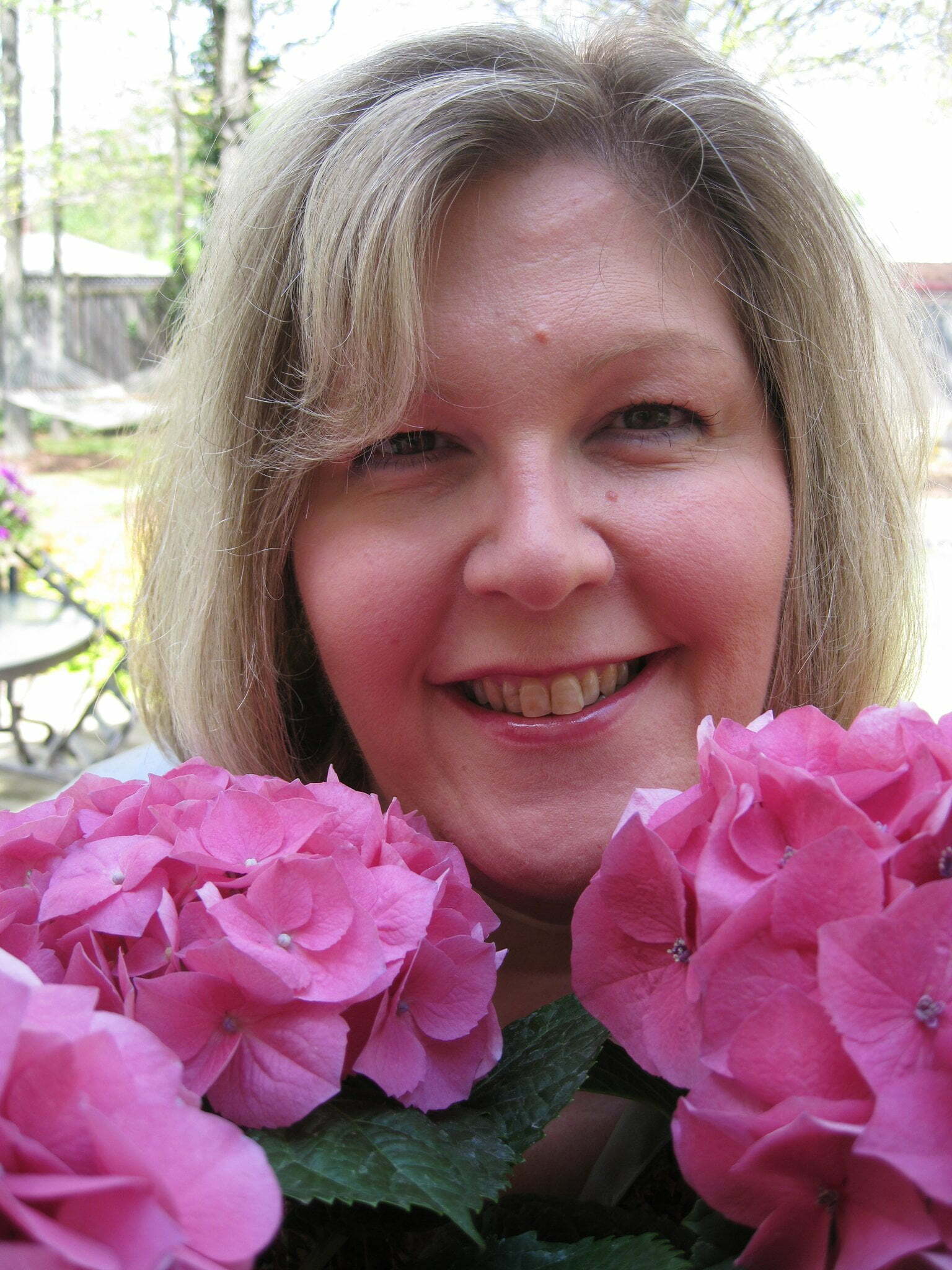Pamela’s Story: Part 1
The following is the first chapter in a 5-part series by Pamela K. She shares her experience with breast cancer diagnosis and breast reconstruction surgery with Dr. Christopher Hess in Fairfax, Virginia. Click here to see all chapters from Pamela’s story.
Five Words That Changed My Life
On Jan. 24, I got a call on my cell phone and heard five words that changed my life. The nice lady on the other end of the line informed me that I had “moderately differentiated invasive ductal carcinoma.” In plain English, breast cancer.

Meet Pamela, breast cancer survivor & reconstruction patient
After two mammograms the month before, a sonogram, and, most recently, a needle biopsy, this was a call I’d been expecting. When it came, I was sitting alone in the treatment room of an urgent care center, waiting to see a doctor about a thumb I’d sprained the day before, when I’d fallen while ice skating with my son. I fumbled around in my purse for a pen and paper to write down everything the nice lady on the phone was telling me. I knew I wouldn’t remember any of it later. Time stopped. The room spun. My world tilted, and I no longer had my equilibrium.
This was the beginning of my breast cancer journey.
Not long after I was diagnosed, a dear friend and breast cancer survivor told me, “You’re going to hear a lot of people’s cancer stories as you make this journey. Some of them will help you, and some of them will scare you. What you have to remember is that none of them are YOUR story. You have to write your own story.”
And, so, I am.
Boldly Going Where I Never Have Before
I have been journaling, privately, since I was 13 years old. And I have been a professional writer and communicator for most of my career. But I have never, ever before written so publicly about such a deeply personal experience as this.
“In the middle of difficulty lies opportunity.” – Albert Einstein
I started writing my story just for myself, to help me process all that I was feeling and all that I was learning. Then I began to share my story on a CaringBridge web site so that family, friends and colleagues would know how I was doing. I also hoped they might benefit from what I was learning along the way – about cancer, its challenges and its gifts; about how to help fight and prevent cancer by the choices we make in life; about regaining and maintaining health and wellness; and, perhaps most importantly, about living a bolder life, unbounded by fear and unfettered by “woulda’s,” “ coulda’s” and “shoulda’s.” This has been one of cancer’s great gifts to me – a new sense of fearlessness.
I was talking to Dr. Hess about some of the gifts cancer has brought into my life at one of our many appointments, and he joked that he should ask me to write about my experience and some of my insights on his blog. Turns out, he wasn’t joking. If we helped just one more person, he said, it would be worth the effort. I certainly agree.
So, here I am, doing a series that will provide a patient’s perspective on breast cancer, the surgery to remove it, and the reconstruction process. I’ll also share the gifts and insights cancer has given me, including the knowledge I’m gaining about how we can all tend to our own wellness – looking and feeling better from the inside out. It’s a nice compliment to plastic surgery, which helps people look and feel better from the outside in.
A Dream Team of Doctors
First, though, I want to say a few words about Dr. Hess. (I swear, he’s not paying me for any of this. Really.) He is one of those rare surgeons who is warm, empathetic, patient, and caring – just a darn nice human being, who also happens to be a very skilled doctor. (And, bonus, he’s funny, but more about that later….) This is the kind of doctor I went looking for on my cancer care team. My breast surgeon is the same way, Dr. Virginia Chiantella, of Leesburg. And my oncologist, Dr. Mary Wilkinson, is a rock star in her own right, willing to partner with her patients to achieve optimal results while also maintaining as much quality of life as possible.
Dr. Hess, Dr. Chiantella, and Dr. Wilkinson were not the first doctors I interviewed as my potential caregivers, but they were all the last in their respective specialties. All spent more than an hour with me on my initial consultations. All were very knowledgeable and current on the latest research and techniques in their fields, and each of them wanted to make sure I understood all my treatment options thoroughly, as well as the potential pros and cons of each. I’m a former journalist, so I ask A LOT of questions. And all were forthcoming (great teachers, really) and extremely kind when, at various points in our conversations, I started to cry – my diagnosis still being relatively new and my emotions about it all still being very close to the surface.
Choosing my Treatment Options
I should note here that I am a very, very, very lucky woman. My cancer was caught early – Stage 1, Grade 2 – so I’ve had more treatment options than many: lumpectomy vs. mastectomy and chemotherapy as a “judgment call” vs. a foregone conclusion. And while, like every cancer patient, there’s a tunnel I have to go through on my way to the light, for me, there IS a light; I’m told that when my treatment is complete, I’ll be “cured.” Many people with cancer have all the challenges of treatment with no light, or only the faintest occasional flicker of it, at the end of their journeys. So, I note again that I am a very, very, very lucky woman, filled with deep, abiding gratitude for my extremely positive prognosis.
In terms of my treatment, I opted for a mastectomy with immediate reconstruction using a muscle from my middle back – the latissimus dorsi – a procedure Dr. Hess told me he’d had a lot of success with, though it’s less common than using a stomach muscle. Dr. Hess and I agreed that it wasn’t a good idea to use one of my stomach muscles because I had spine surgery in December 2009, and, so, it was best for me to keep my core muscles intact.
While it’s easy to recount my surgical choice now, the decision was, in fact, a difficult one for me to make emotionally. My breasts and I have been through a lot together – some really fun times, plus the amazing experience of nursing my son — and while I never thought they were all that fabulous looking, they were mine, they were a part of me, and I wasn’t sure I was ready to lose one completely.
So why did I ultimately choose a mastectomy over a lumpectomy? There were a lot of factors that when into my decision, but the most important one, the deciding factor, was that I have a young son. He was just a month away from his 10th birthday when I was diagnosed, and I felt strongly that I owed it to him to fight this disease as aggressively as possible. When I was done with this cancer journey, I needed to feel that I had done everything possible, everything within my power, to help ensure I’d be around to continue to raise him in the important years ahead. Doctors had told me that the recurrence rate of breast cancer in patients who have a lumpectomy is in the 5% – 7% range, while with a mastectomy the recurrence rate drops to 1%-2%. Small numbers either way, to be sure, but given that my type of cancer was aggressive (HER-2+) and has a 30% greater recurrence rate than other types of breast cancer, I wanted to do all I could to stack the deck in my favor.
To me, stacking the deck in my favor also meant avoiding radiation, which would have been required every day for 6 weeks following a lumpectomy. I’d read about the potential risks of radiation to create cancer down the road, and I just didn’t want the worry of that possibility hanging over my head after treatment. Dr. Hess had also explained in our initial consultation that if I had a lumpectomy with radiation, and, God forbid, cancer came back in the same breast, it would be more difficult to do a good reconstruction with radiated skin.
So, everything I learned pointed to a mastectomy for me, despite the fact that it would be more involved than a lumpectomy and require more down time. Dr. Hess was a little surprised by my decision, I think, because he told me at our initial consultation that I struck him as the kind of person who would opt for a lumpectomy. He read me, correctly, as someone who likes to solve problems quickly and move on. But in this case, I was after the absolute best fix for my problem, not necessarily the fastest or easiest.
Once my decision was made, I tried to focus on the prize in this box of Cracker Jacks. At 47, I would come out of this experience with two fabulous, new, perky breasts – one reconstructed and the other one “lifted” to match. Not such a bad deal, really.
Next: Dr. Hess’ perspective – Communicating with a patient who’s just been told she has cancer.
Resources
Here are two books and web sites I found extremely helpful when I was first diagnosed with cancer.
The Human Side of Cancer: Living with Hope, Coping with Uncertainty by Jimmie C. Holland, M.D., Memorial Sloan-Kettering Cancer Center, and Sheldon Lewis.
Cancer: 50 Essential Things To Do by Greg Anderson

